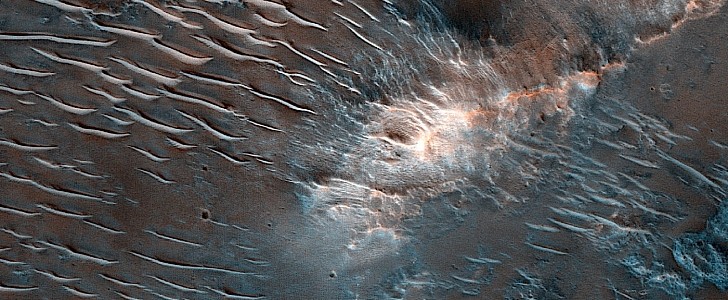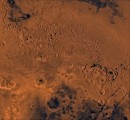For many sci-fi literature lovers, there will never be a greater space saga than Frank Herbert’s Dune. Spanning for 24 books (prequels and spinoffs included), the imaginary tale captures on paper humanity’s story 20,000 years from now, in incredible detail.
At the center of Dune is a planet that wears the same nickname, but is also known as Arrakis. It’s a desert world, the place from where the spice that holds the human universe together flows, and a piece of rock some of us liken to neighboring Mars.
As portrayed by Herbert in writing and by various directors on film, Arrakis does seem eerily similar to the Red Planet. A desert world, with a reddish soil, at the center of all human cravings.
Arrakis does have something however Mars no longer has, and that’s life. We’re not talking here about the Fremen or the armies of various houses, but the indigenous sandworms, the massive creatures that are responsible for the creation of spice.
Even if Mars does not have life, some of the features there do seem to resemble that, the sandworms. We’re talking about dunes, those ripples on the surface that bring to mind the sign of huge worms swimming underneath.
We’ve talked about these features before, as we trekked through the world of HiRISE images of Mars. The one we have here however seems to show lots of them, converging on some carcass of a long-gone beast to feed.
The image, captured back in 2020 from an altitude of 259 km (161 miles), actually shows dunes and “light-toned knobby units located within a heavily degraded crater,” our imaginary carcass.
The place is located in an undisclosed region of the planet and appears to be “altered ashfall deposits that washed into the lake or hydrothermally altered basin floor deposits,” just like in other locations on the alien world.
As portrayed by Herbert in writing and by various directors on film, Arrakis does seem eerily similar to the Red Planet. A desert world, with a reddish soil, at the center of all human cravings.
Arrakis does have something however Mars no longer has, and that’s life. We’re not talking here about the Fremen or the armies of various houses, but the indigenous sandworms, the massive creatures that are responsible for the creation of spice.
Even if Mars does not have life, some of the features there do seem to resemble that, the sandworms. We’re talking about dunes, those ripples on the surface that bring to mind the sign of huge worms swimming underneath.
We’ve talked about these features before, as we trekked through the world of HiRISE images of Mars. The one we have here however seems to show lots of them, converging on some carcass of a long-gone beast to feed.
The image, captured back in 2020 from an altitude of 259 km (161 miles), actually shows dunes and “light-toned knobby units located within a heavily degraded crater,” our imaginary carcass.
The place is located in an undisclosed region of the planet and appears to be “altered ashfall deposits that washed into the lake or hydrothermally altered basin floor deposits,” just like in other locations on the alien world.






